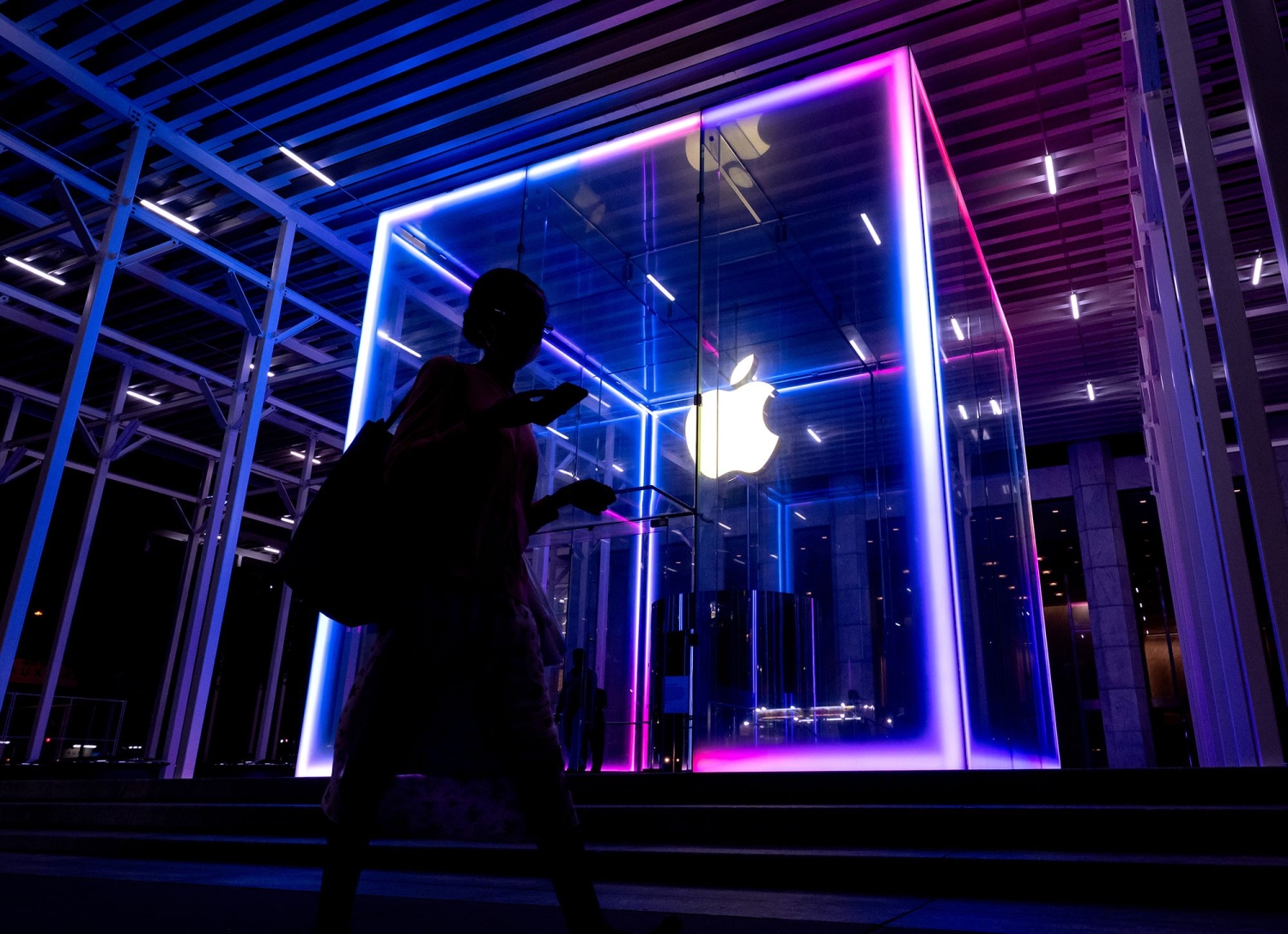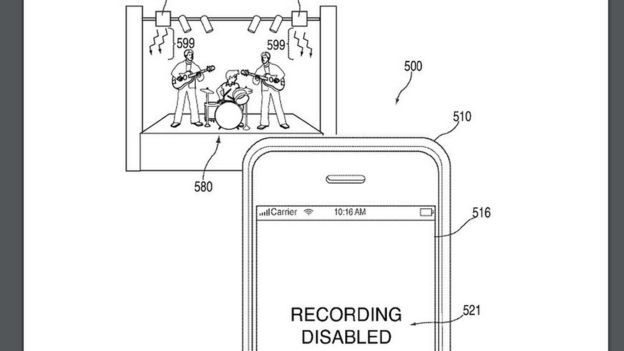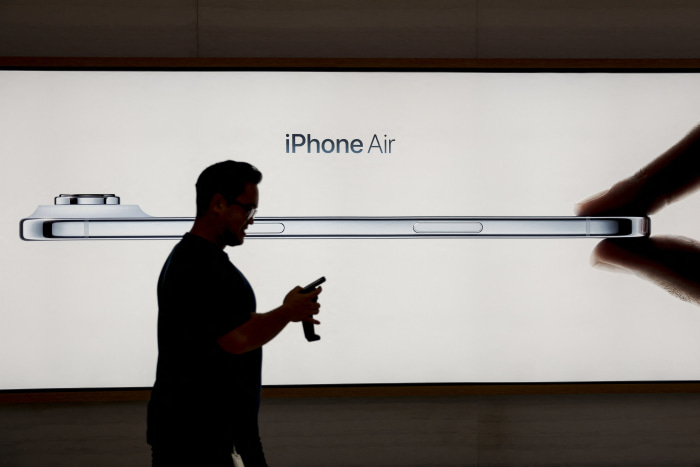
This article is more than
9 year oldApple patents concert camera blocker
The patent describes a smartphone camera receiving coded infrared signals beamed from emitters in public places.
The handset could then offer on-screen information or disable the camera functionality to stop pictures being taken.
One technology journalist said the technology could frustrate consumers.

APPLE/UNITED STATES PATENT AND TRADEMARK OFFICE
"It could harm Apple in the eyes of some people," said Stuart Miles, founder of gadget site Pocket Lint.
"People like freedom of speech - and who is Apple to tell me I can't record something?
"But Apple patents stuff all the time, a lot of big companies do that. It might be created for one purpose, but end up used for something else."
The patent was first filed in 2011 and details a variety of scenarios in which the technology could be used.
One example shows an infrared emitter placed next to a museum exhibit, which the smartphone can identify to give visitors more information about the artefacts on display.
 I
IAPPLE/UNITED STATES PATENT AND TRADEMARK OFFICE
However, other methods of augmenting museum exhibits - such as location-based data sharing and scanable QR barcodes - already exist.
It is also possible that a system using coded infrared signals to disable a smartphone camera could be defeated with an inexpensive infrared light filter, or by modifying the handset's software. Consumers could also switch to rival devices that do not use the technology.
"I think the idea would resonate more with event organisers than consumers," said Mr Miles.
"You can see why some music stars would like people just to concentrate on the music, since they've paid to see it. You're also not supposed to record football games and share clips of goals, as there is money involved and the clubs sell broadcast rights.
"But it would probably harm Apple, for some people. Nobody likes to be surprised when you want to record a video but can't."
Apple did not comment on the patent.




